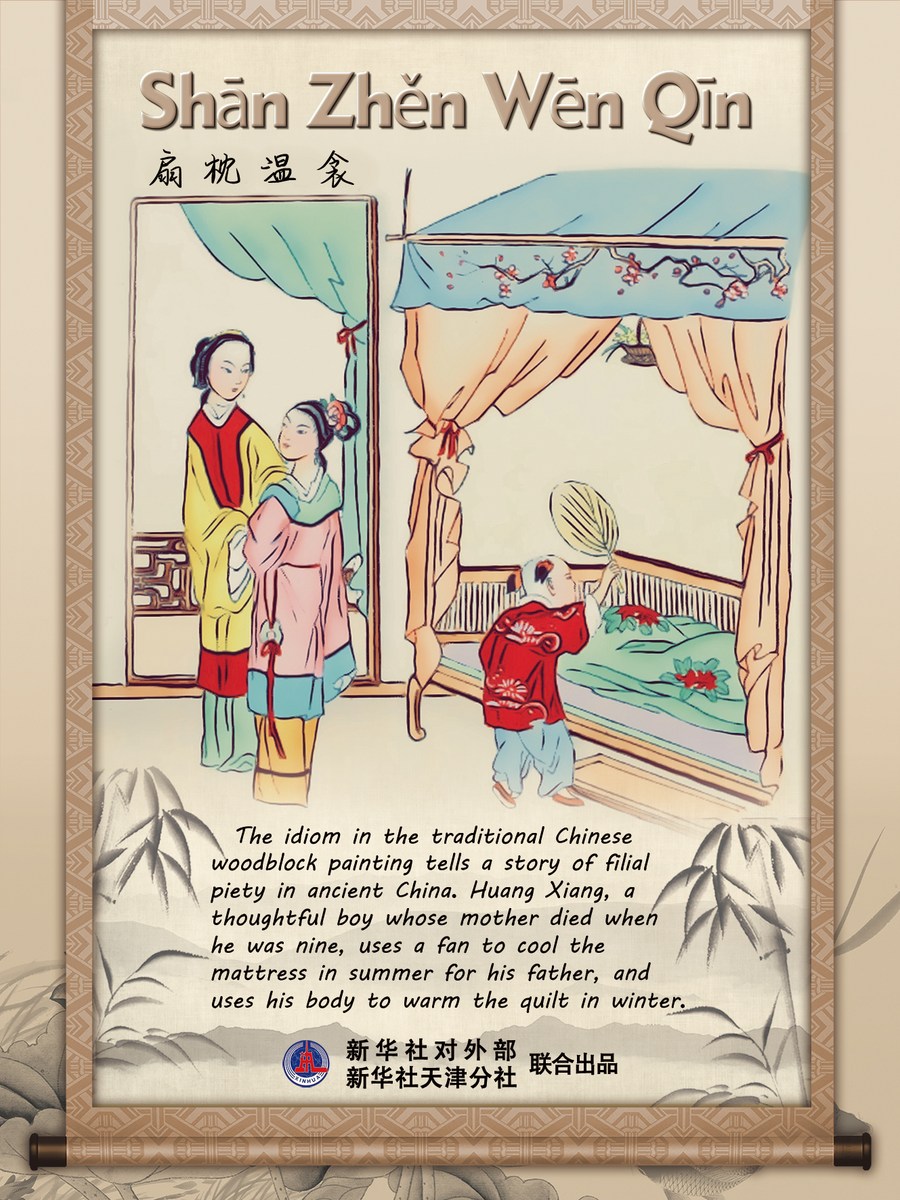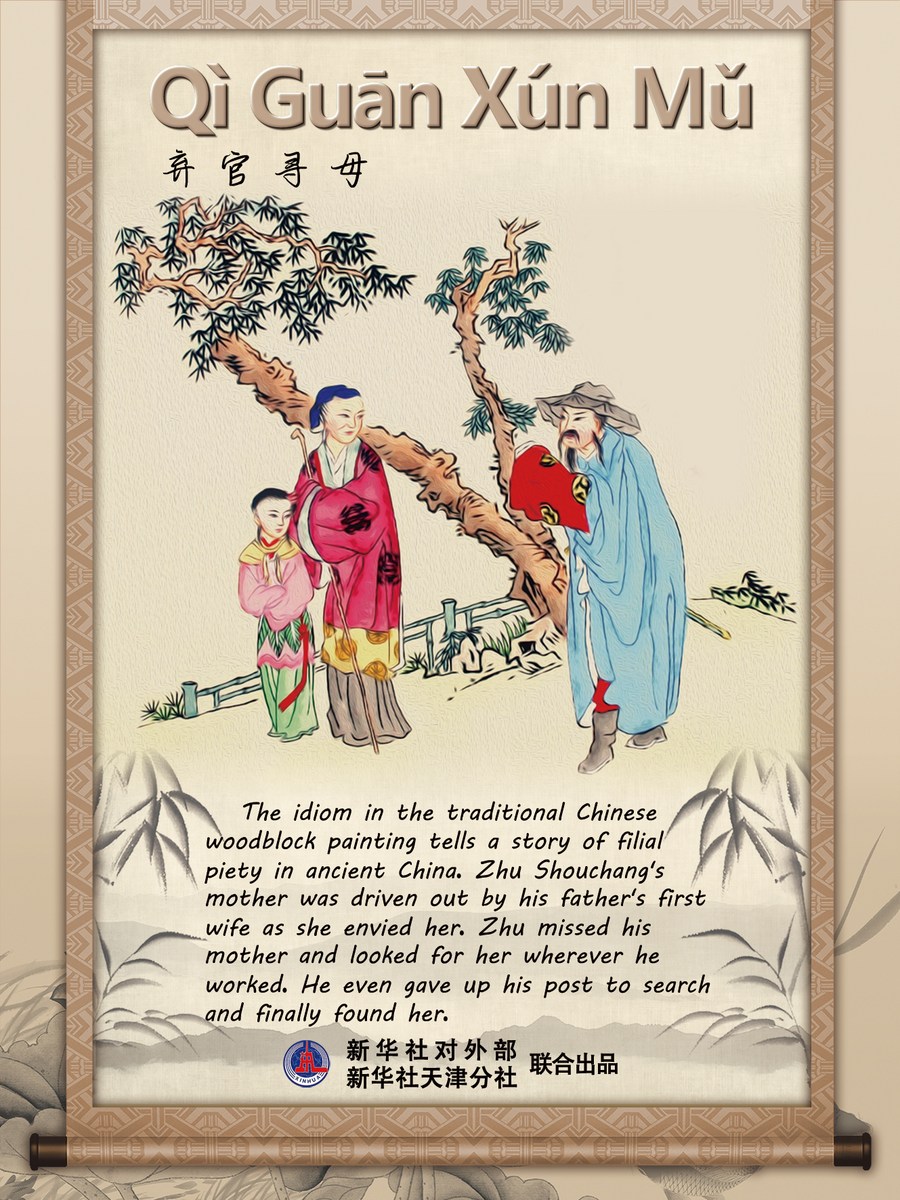TIANJIN, Oct. 21 (Xinhua) -- Huo Qingshun is highly familiar with the Yangliuqing woodblock prints displayed in a gallery in north China's Tianjin Municipality, as he is not only an inheritor of the centuries-old craftsmanship but also knows very well morals of the stories described in the artworks.
The Yangliuqing woodblock painting was one of the most popular forms of New Year decorations in China, which flourished in Tianjin and the surrounding areas during a period between the late Ming Dynasty (1368-1644) and the early Qing Dynasty (1644-1911).
The printings contain abundant themes and content, especially traditional Chinese virtues such as filial piety, harmony and benevolence. Many of these stories described in these prints usually remain widely read and promoted in China today.
One idiom, named "Shan Zhen Wen Qin," tells that Huang Xiang, whose mother died when he was nine years old, did his best to take care of his father. During the hot summer, the young boy cooled his father's bed with a fan, and when the weather turned cold in winter, he warmed his father's quilts with his body.
When Huang grew up, he became a government official. He even gave everything he had, salary and property, to save people affected by floods.

The idioms in the traditional Chinese woodblock paintings tell stories of filial piety in ancient China. Photo provided by #Yangliuqing Woodblock Painting Gallery
Another printing, "Qi Guan Xun Mu," depicts that Zhu Shouchang of the Song Dynasty (960-1279) did not see his mother for 50 years as his father's first wife envied his mother and drove her out, when he was seven.
During the 50 years, Zhu missed his mother all the time and looked for her wherever he went. Zhu finally decided to give up his official position to search for his mother. After going through all the hardships, he finally found her when she was in her 70s.

The idioms in the traditional Chinese woodblock paintings tell stories of filial piety in ancient China. Photo provided by #Yangliuqing Woodblock Painting Gallery
"Those stories are among the 24 Filial Exemplars, a classic text of Confucian filial piety passing on since the Yuan Dynasty (1271-1368), showing the filial piety, a traditional virtue that has been highly valued by the Chinese by generations," Huo said.
"I was obsessed with my father's pictures since I was a child, and what attracted me more were the stories behind the pictures. I always looked forward to my father telling me," recalled Huo, who was born in 1950 and began to learn Yangliuqing woodblock prints from his father at the age of five.
"I gradually fully understood the profound meanings of the stories as I got older, which have also had a positive influence on my life," Huo said.
As an inheritor of Yangliuqing woodblock prints, Huo works with the gallery to pass on the craftsmanship.
"From Huo's introduction, I got to know the ancient artworks and the profound cultural connotations, which taught me to promote filial piety, respect and love my parents," said Peng Yudan, a visitor who visited the gallery.
As China has entered an aging society, the forms of filial piety are changing. Among some popular filial exemplars spreading on the Internet today, people are asked to call their parents every week, visit parents with their children often, buy insurance for parents, as well as teach parents to use computers or cellphones. ■




